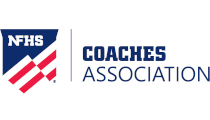The 15-year old-boy was dead. The movement in his chest had stopped, we couldn’t find a pulse, and his face was slowly turning blue. Moments earlier he had come off the floor during a basketball game and had sat on the bench for a rest. Suddenly, he slumped over onto his teammate, who alerted their coach, who yelled to me the four words I always hate to hear “I need your trainer.”
As a small school, we have no trainer. I jumped up from the score clock, which I was operating at the time, and was quickly joined by our game director, an official, the coaches and several parents – three of whom happened to be doctors. We laid the player on the floor, called 911 and started chest compressions. Somebody grabbed the AED (Automated External Defibrillator) from the near-by cafeteria and came rushing in. While CPR was being administered, the boy’s shirt was cut off and the pads were put in place.
After a moment of analyzing, the AED stated, “Shock advised.” We looked at each other in disbelief, and one of the doctors pressed the button. The boy’s body jumped, but his chest remained motionless and there was no pulse to be found. We resumed CPR and two or three minutes later paused to let the machine reanalyze. Again we heard the monotone, “Shock advised.” We backed up, and again the button was pressed. Again the boy’s body jumped, but this time there was a gasping and gurgling sound from his mouth and his chest heaved. “I have a pulse!” shouted one of the parents. Then the Rescue Squad arrived. They took over, strapped an oxygen mask to his face, placed him on a gurney and took the boy to the hospital. When he left our gym, the boy had a pulse and was breathing. The word was that he was alive, but in a medically-induced coma, and we would need to wait and see how severe the damage was.
The next day was one of the longest and happiest days of my life. I didn’t sleep much that night and the next morning walked around the house as if in a daze. Was he going to make it? Was he brain damaged? Had we acted soon enough? At about 2:00 in the afternoon, I received an email from the principal of the other school. Not only was he going to be OK, but tests showed that he had never lost oxygen to his brain. There was no brain damage whatsoever, and doctors expected a full and complete recovery.
There is no doubt in my mind that the thing that saved that boy was the AED. As fate would have it, I had been recertified in CPR in August. Three of the parents who had stepped in to assist the boy were doctors, including one who is the head of trauma in one of the top hospitals in the country. A fourth parent had been in the Air Force in Iraq, and had been involved in his share of emergencies. We had others on cell phones calling 911, and responded to the entire incident in a matter of seconds. We had performed chest compressions and rescue breathing, and the Rescue Squad arrived within 15 minutes of the boy falling over. Still, despite all of these efforts, we would probably not have been able to save his life, and almost certainly wouldn’t have been able to avert brain damage, had it not been for the AED.
AEDs are expensive. Periodically, they need their batteries changed and pads replaced. Coaches need to be trained on how to use them. They need to be checked frequently to make sure that none of the components have “walked.” It is one more item on the endless “to-do” list for athletic directors and school personnel. I never expected to have to be involved with using one on anybody, let alone on a 15-year-old basketball player, but I did, and that boy has been given a second chance on life thanks to that AED.
Please spread the word to your athletic director, principal, superintendent or school board – you need to have an AED in your school.
Dan Meserve
Dan Meserve is a teacher, softball coach and athletic director at Hopkinton High School in Contoocook, New Hampshire. He is a member of the NFHS Coaches Publications Committee.
Most Recent Articles
- nfhs news NFHS Learning Center Delivers 25 Millionth Course
- Track & Field/Cross Country article Effective Communication with Athletes and Coaches
- nfhs news Player Equipment Changes Highlight 2025 High School Football Rules Revisions
- Player Equipment Changes Highlight 2025 High School Football Rules Revisions
- nfhs news Judgment Call on Second Contact Eliminated in High School Volleyball






